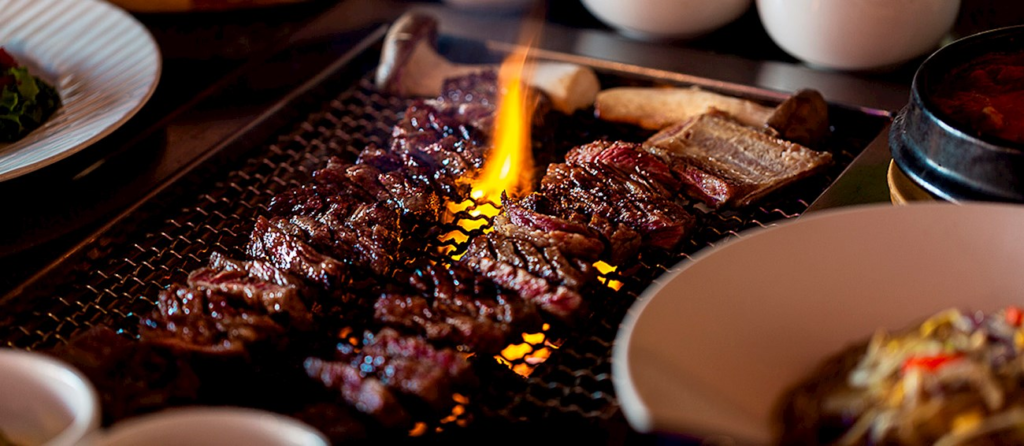
I’m a published food historian. I like to clear up historically inaccurate information and give restaurant recommendations and cooking tips.
There’s a bit of confusion in published writing regarding the origins of LA galbi and the mean of the “LA” part. A few Koreans have conjectured that the “LA” might refer to the “lateral axis cut” of the meat. I’ve read this in both English and Korean.
My husband is a chef, a culinary instructor, and a butcher. There is no such thing as a “lateral axis cut” of meat. The “LA” refers to Los Angeles.
A few Korean Americans also falsely believe that it’s a “Latino cut” of beef and Koreans first purchased the cut at Latino owned meat markets beginning in the 1980s. This is also not true. My family lived in predominately Mexican American neighborhoods in the 1970s. This is not a “Latino” cut of meat. We have plenty of experience shopping at Hispanic markets. I started seeing this cut in a few Mexican or Hispanic butcher sections in the 1990s. I know that this cut is sometimes used in Mexico. It was probably taken to Mexico from LA through reverse migration. I also read Spanish at adult level. I’ve researched this in Spanish as well.
The first time my parents bought LA galbi was at an American supermarket in Koreatown that was being taken over by Koreans. A Korean butcher explained the cut to my parents. He said Koreans developed it in LA because of how whole cows are broken down in American style butchery. He said 통갈비 tong galbi was a rare cut to glean. LA galbi could be cut with an electric band saw from a slab of American style cut beef ribs. This was in the 1970s.
I also trace the history of technology in cooking. Electric band saws were widely used by butchers in Los Angeles and the United States well before they were widely available in South Korea or Mexico. The LA galbi cut of beef is widely associated with Koreans in Los Angeles and the United States. I’ve seen it sold in mainstream supermarket chains as “Korean bbq ribs”.
My son asked me if soon dubu was invented in Los Angeles. He found a blog post that linked to a video with chef Roy Choi claiming that soon dubu was invented in Los Angeles. Soon dubu wasn’t invented in Los Angeles. It was invented in Korea. Some form of soft tofu stew has been eaten for hundreds of years in Korea. A recipe for soon dubu that is similar to the ones served at Beverly Soon Tofu in Los Angeles was first published in a newspaper in Korea in the 1970s. Beverly Soon Tofu openend in 1986. I had soon dubu at restaurants in Korea and Koreatown well before 1986. Others think that BCD Tofu House, which opened in 1996 invented soon dubu. You see how the timelines of these claims don’t make sense.
What the owners of Beverly Soon Tofu and BCD Tofu House did was dedicate restaurants to serving soon dubu as the focal point. They also helped popularize the dishe with a larger American audience. BCD Tofu House makes soon dubu kits that are sold at Korean and Asian supermarkets in Los Angeles.
One last myth that I want to address is the weird idea floating around 1.5 and 2nd generation Korean American men about milk being added to the broth at Hanbat Shul Lung Tang to make the broth milky. No. Milk is not added. Milk would curdle. The key to making milky white broth is to boil cartilage rich beef bones on gentle boil for hours and hours. The fat and collagen from the bones emulsify in the broth to make it milky white. I was a location scout for one of Andrew Zimmer’s Koreatown shows. I visited the staff at Hanbat and they let me inside their kitchen. No milk.